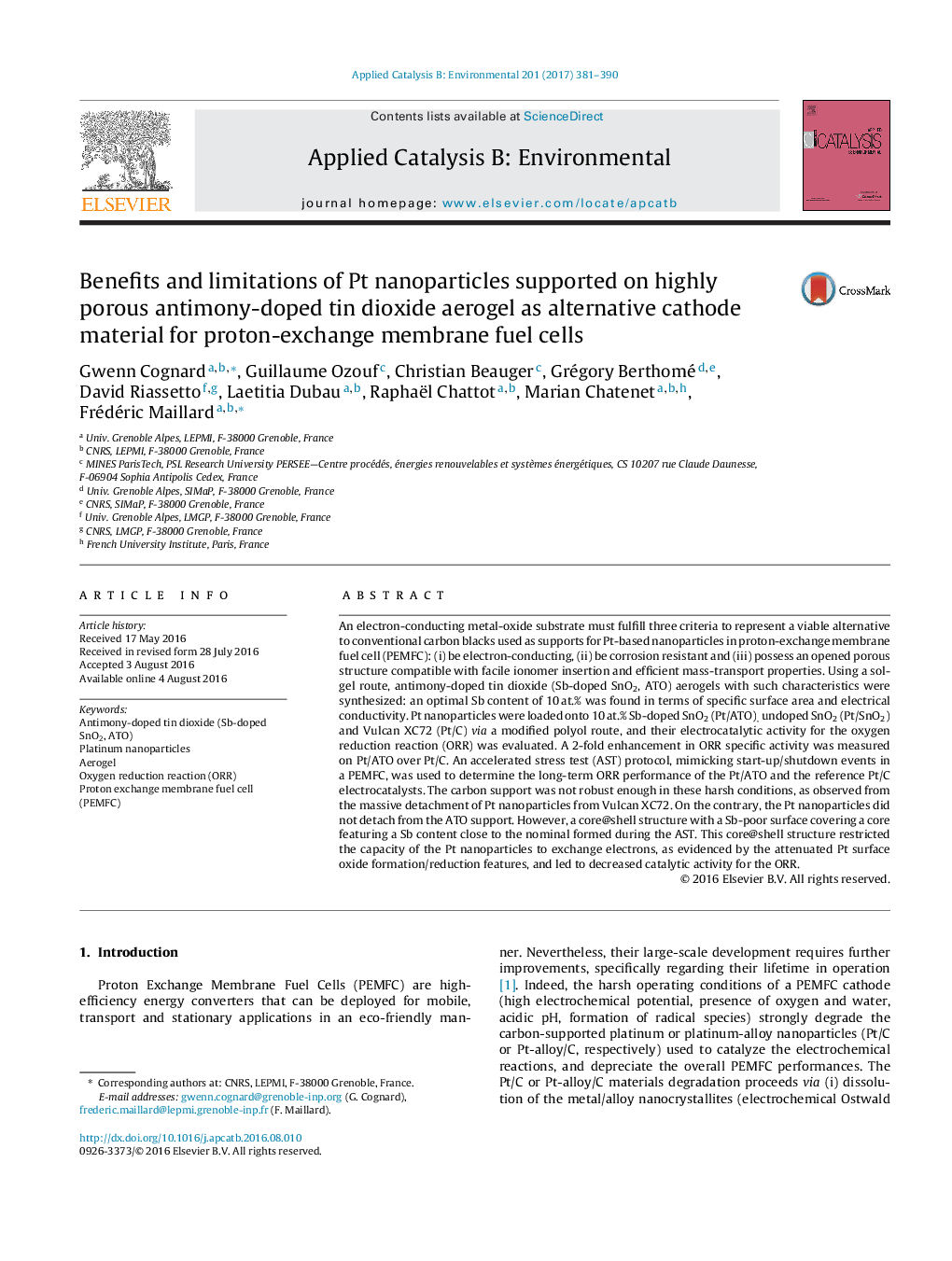| کد مقاله | کد نشریه | سال انتشار | مقاله انگلیسی | نسخه تمام متن |
|---|---|---|---|---|
| 6455025 | 1418819 | 2017 | 10 صفحه PDF | دانلود رایگان |

- Synthesis and characterization of antimony-doped tin oxide aerogels (Sb-doped SnO2).
- The best ATO aerogel was decorated with Pt nanoparticles (polyol method).
- Pt/Vulcan XC72 was synthesized using the same Pt colloidal suspension.
- Two-fold enhancement in specific activity for the ORR on Pt/ATO relative to Pt/C.
- Pt/ATO is more resistant to corrosion than Pt/C during accelerated stress testing.
An electron-conducting metal-oxide substrate must fulfill three criteria to represent a viable alternative to conventional carbon blacks used as supports for Pt-based nanoparticles in proton-exchange membrane fuel cell (PEMFC): (i) be electron-conducting, (ii) be corrosion resistant and (iii) possess an opened porous structure compatible with facile ionomer insertion and efficient mass-transport properties. Using a sol-gel route, antimony-doped tin dioxide (Sb-doped SnO2, ATO) aerogels with such characteristics were synthesized: an optimal Sb content of 10Â at.% was found in terms of specific surface area and electrical conductivity. Pt nanoparticles were loaded onto 10Â at.% Sb-doped SnO2 (Pt/ATO), undoped SnO2 (Pt/SnO2) and Vulcan XC72 (Pt/C) via a modified polyol route, and their electrocatalytic activity for the oxygen reduction reaction (ORR) was evaluated. A 2-fold enhancement in ORR specific activity was measured on Pt/ATO over Pt/C. An accelerated stress test (AST) protocol, mimicking start-up/shutdown events in a PEMFC, was used to determine the long-term ORR performance of the Pt/ATO and the reference Pt/C electrocatalysts. The carbon support was not robust enough in these harsh conditions, as observed from the massive detachment of Pt nanoparticles from Vulcan XC72. On the contrary, the Pt nanoparticles did not detach from the ATO support. However, a core@shell structure with a Sb-poor surface covering a core featuring a Sb content close to the nominal formed during the AST. This core@shell structure restricted the capacity of the Pt nanoparticles to exchange electrons, as evidenced by the attenuated Pt surface oxide formation/reduction features, and led to decreased catalytic activity for the ORR.
108
Journal: Applied Catalysis B: Environmental - Volume 201, February 2017, Pages 381-390